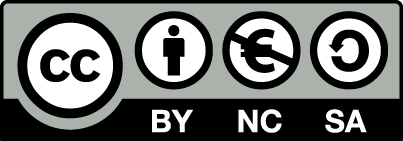(Other)
(Supervisor)
Sonnengestützte Prozesse inspirieren Hoffnungen und Träume von einer nachhaltigen Zukunft auf dem Planeten Erde. Das Design und die Auslegung von Fotoreaktoren für spezifische Reaktionssysteme ist jedoch eine komplexe Aufgabe an der Schnittstelle zwischen Materialwissenschaften und Engineering. Die Zielstellung des Auslegungsprozesses ist es dabei stets einen Fotoreaktor zu entwerfen, der sowohl optimale Betriebsbedingungen als auch eine hohe Strahlungstransporteffizienz sicherstellt. Der Veröffentlichte Datensatz begleitet die Veröffentlichung ‘Low-cost photoreactors for highly photon/energy-efficient solar-driven synthesis’, DOI: XYZ. Die genannte Veröffentlichung führt dabei reflektionsbasierte multipassagen Fotoreaktoren und eine Optimierungsstrategie für solche Fotoreaktoren ein. Das Manuskript unterstreicht die Validität des Konzepts durch die experimentelle Demonstration einer Fotoreduktion von Kaliumeisen(III)oxalat und leitet zuletzt eine Designrichtlinie ab, die die Adaption des Fotoreaktors auf andere Reaktionssysteme erleichtert. Der veröffentlichte Datensatz umfasst die verwendete optische Simulationsumgebung, den Code des Optimierungsalgorithmus, Simulationsergebnisse und experimentelle Ergebnisse, die im referenzierten Manuskript dargestellt werden.
Solar-driven processes inspire hopes and dreams of a sustainable future on planet earth. However, the design and optimization of photoreactors for specific reaction systems is a complex task at the interface of material science and engineering. The objective of the design process is, thereby, to derive a photoreactor that provides both optimal operating conditions and a high efficiency of radiation transport. The published data set accompanies the publication ‘Low-cost photoreactors for highly photon/energy-efficient solar-driven synthesis’, DOI: XYZ. The referenced manuscript introduces reflective multi-pass photoreactors, an optimization strategy for such photoreactors, underlines the validity of the chosen approach by the experimental demonstration of a potassium iron(III) oxalate photoreduction, and lastly derives a concise design guideline that supports the adaptation to other reaction systems. The published dataset comprises the optical simulation environment, the optimization algorithm code, the simulation results, and experimental data presented in the manuscript.
The two folders comprise data of the photoreactor optimization and analysis reported in the linked article. The folder with the photoreactor optimization data comprises code and simulation results. The folder with the photoreactor analysis comprises simulation results and experimental results in the corresponding subfolders. The code is written in MATLAB. Reading and modifying the code requires a working MATLAB environment. Running the code may further require the MATLAB global optimization toolbox and the MATLAB parallel computing toolbox.
Photoreactor analysis
Monte Carlo Ray Tracing
Views
Downloads
